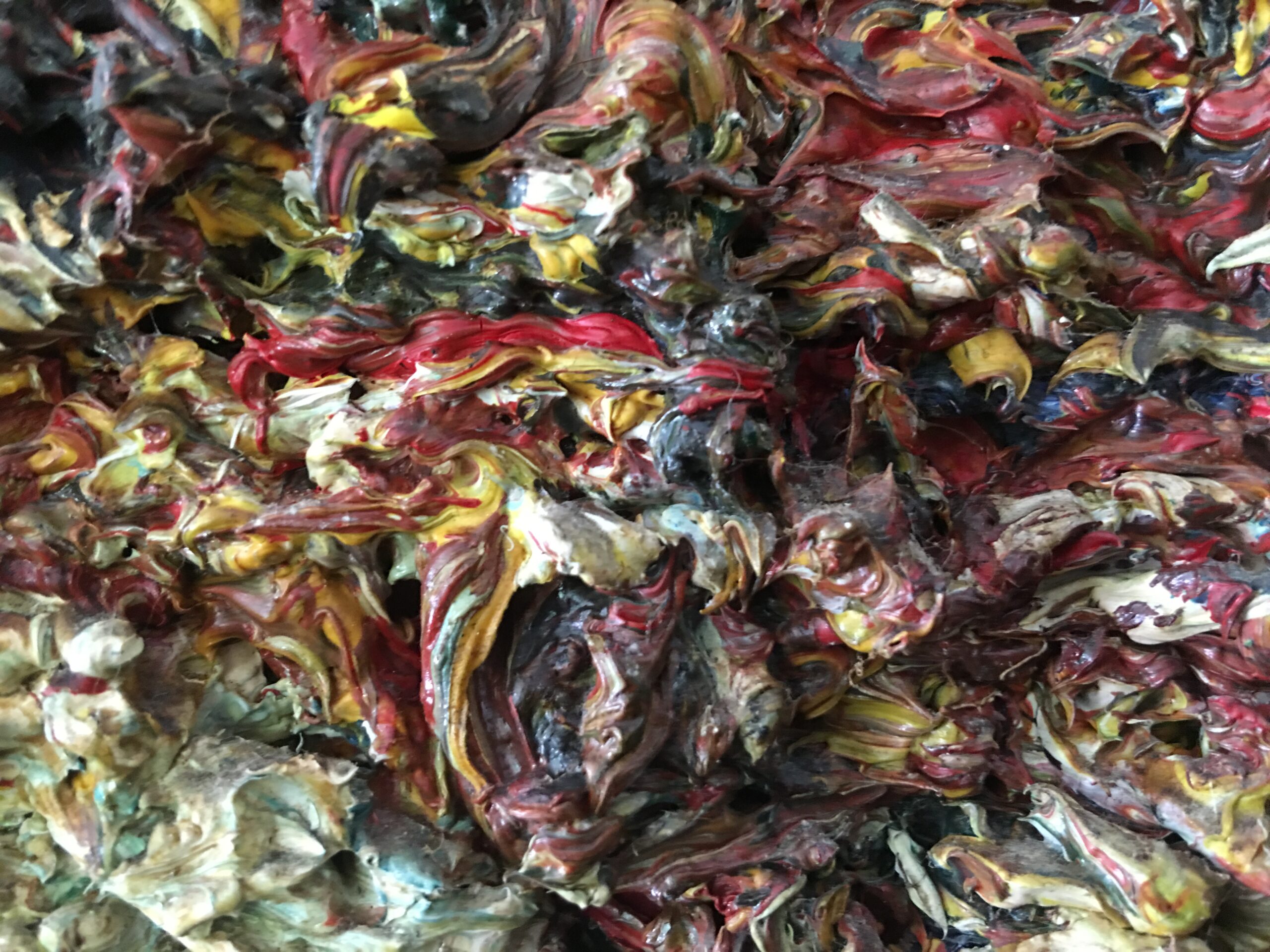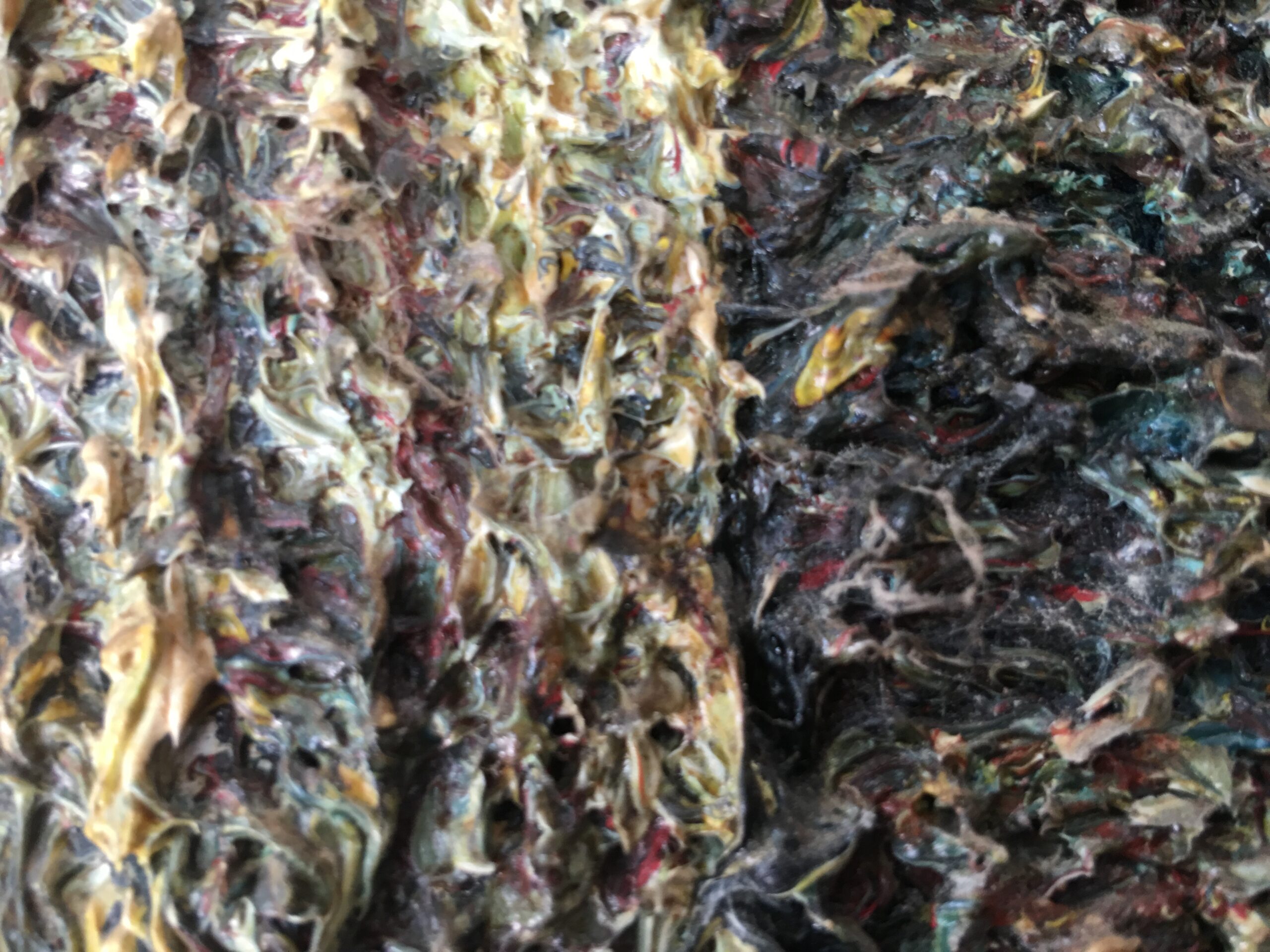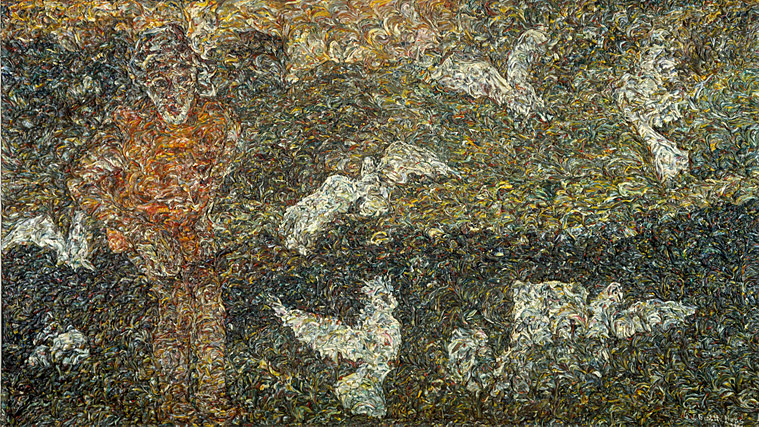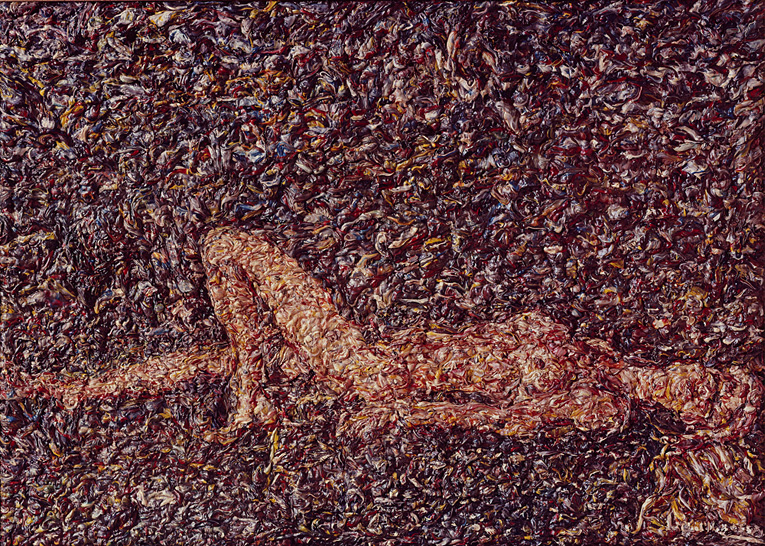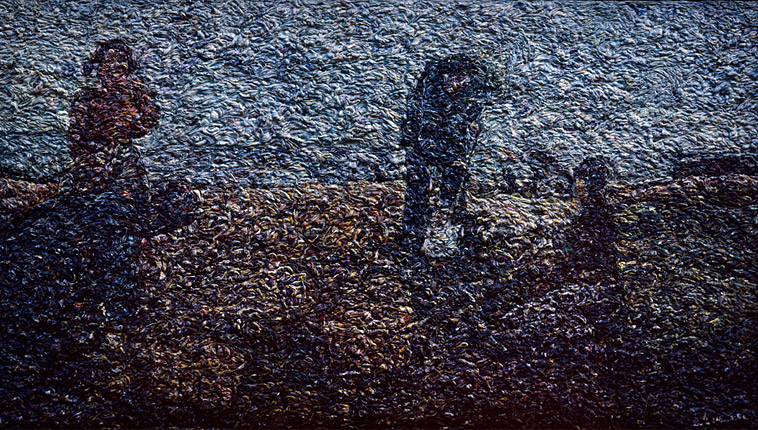Website created by the friends and admirers of Berthe Hess
Berthe Hess
1925 – 1996
The Unparalleled and Supreme Master of the Canvas and the Creator of the Most Unique and Unforgettable Painting Artistry!
Cheveaux Demi Sauvage de Camargue
Enjoy the magical magnificence of her unique Painting and her almost miraculous, intricate, elegant, enigmatic and amazingly dazzling paintings!
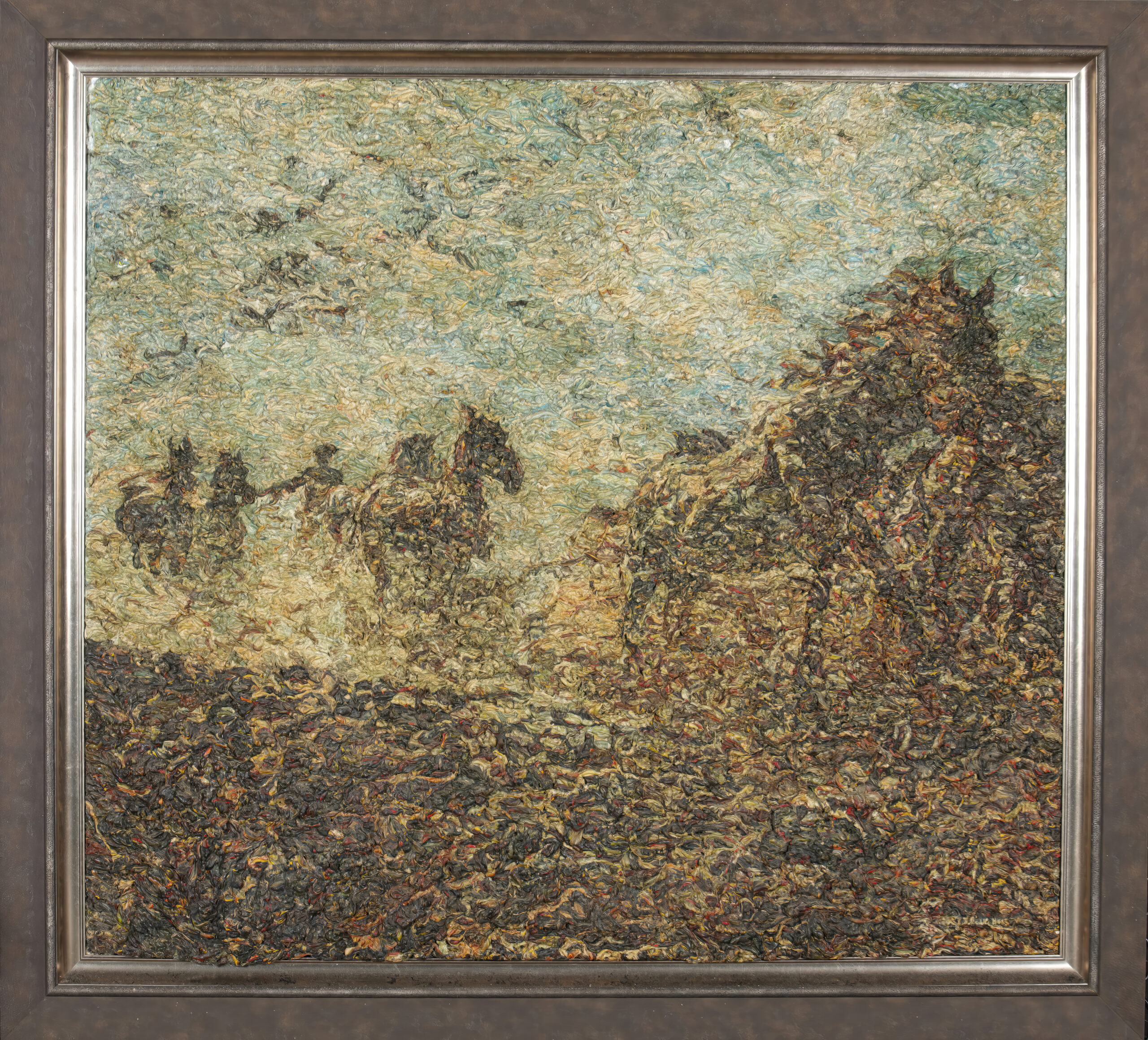
Observe the close-up below to admire the paint’s thickness, the intricate details, and the horse painting’s profound complexity.
Berthe Hess (1925-1996) was a celebrated artist known for her distinctively unique and unforgettable paintings that have captivated many. Her most renowned piece, “Chevaux Demi Sauvage de Camargue,” is considered a masterpiece. This massive painting which weighs a staggering 40kg and measures 133 cm x 147cm, took an entire year to complete. The painting is so thick that it took several years to dry.
During her life, Hess’ unique paintings were highly sought after by collectors and patrons, including royalty, presidents, heads of state and prime ministers. Wealthy art collectors and patrons recognised her unique talent and skill and actively pursued her pieces to add to their collections. Hess’ art was not only admired but also valued for its significance.
Berthe Hess owned her own gallery, the B.H. Corner, located in Paternoster Square near St Paul’s Cathedral in the City of London. Her gallery included a small museum where she exhibited and sold her artwork, which allowed her, unlike other painters to avoid relying on auction houses as a sales channel. She had strong reservations about auction houses, expressing ethical concerns about the way they commercialised art. She believed that the auction process was impersonal and hindered the development of a meaningful connection between the artist and the buyer. As such, she chose not to sell her artwork through auctions, especially the renowned auction houses such as Sotheby’s and Christie’s. Instead, she chose to sell her paintings directly to investors and collectors or exhibit them in museums, national and public galleries, and exhibitions. This allowed her to ensure that her work was fairly presented in a manner consistent with her artistic vision and values.
Despite Berthe Hess’ distinguished status as an artist, her impact on auction houses was unfortunately not as significant. Her preference for direct sales with buyers, often involving cash transactions or payments to discreet overseas bank accounts, may have contributed to this. This approach resulted in a lack of substantial resale history, making it challenging to ascertain the value of her paintings and her position in the art scene of her era
Berthe Hess had over sixty exhibitions, including in Paris and London. Her works were displayed in a permanent collection at the Berthe Hess Museum from 1967 until 1983, when she was forced to close the gallery due to the redevelopment of Paternoster Square where both her gallery and museum were. The gallery and museum were very popular venues, attracting a wide variety of visitors, including show-business stars, politicians, artists, and writers. It was also a popular gathering place for people from all levels of the City’s society.
Berthe Hess’s sense of scale and composition approaches the grandeur of the old masters. The technique she used is painstaking and difficult to master, as that of any school that has ever existed. Her works belong to institutions that appreciate modern and contemporary French artists such as the Musee du Louvres, Fondation Maeght in Saint Paul de Vence, the Fondation Cartier, Smithsonian Institution in Washington, the Museum of Modern Art in New York, the Fondation Louis Vuitton, the Uffizi Gallery in Florence and the Tate Gallery in London.
The painting “Cheveaux Demi Sauvage de Camargue” was her favourite. It is a “chef-d’oeuvre” that stands out as a unique and unforgettable work of art. It is a shining example of the incredible skill and unmatched talent of Berthe Hess. For any lover of art, this painting is an absolute must-see, a once-in-a-lifetime experience that will leave you breathless with its beauty. Truly, it is a treasure to behold.
We invite you to closely view her much-loved painting “Cheveaux Demi Sauvage de Camargue” and zoom in, using the magnifier, to view the surface of her finished work. When seen up close, the surface appears as a labyrinth of colour and light trapped in thick tunnels of paint and, when viewed from a certain distance, the scenes emerge from the canvas. The closeup is rather like looking at a relief map of the Himalayas with many peaks and chasms, caves and crags, hills, and hollows. It is built from many thousands of interwoven globules of paint, each globule containing uncountable hair like veins of colour like those seen in the glass marbles we played with as children.
Although Berthe Hess was not associated with major auction houses and had little presence on the auction scene, her private sales continued to thrive. Her artwork is still highly valued and admired by those who possess it. We cordially invite you to join us, her friends, and fans of this exceptional artist in celebrating her work and honouring her legacy.
If you are interested in adding a Berthe Hess painting to your collection, we would be delighted to assist you. For more information, please contact us at paintings@berthehess.com.
What the Critics said: Press and Reviews
- Berthe Hess has a sense of scale and composition approaching the grandeur of the old masters – Buying Antiques
- Comparing her importance to that of Picasso,Eleanora Bests says in the 1973 Investors Review : “The King is dead – long live the Queen”
- Her work can never be copied, imitated, or forged – Investors Review 1974
- Her permanent exhibition had a procession of famous visitors, which included Prince Charles, Princess Anne, and the French President, Giscard D’Estaing – Tony Cornwall-Jones
- Berthe Hess had already been heralded by discriminating critics for her unique,extraordinary work. It would be wrong to describe what she does as painting; it is more sculpture in paint – Peter Fuller, The City Press, 1969.
- Berthe Hess works not in two dimensions but in three! – Buying Antiques Vol 1, issue 6,13th July 1973
- These are oils painted by Berthe Hess in a manner of her own invention – Max Wykes Joyce, New York Herald Tribune, 27th December, 1969
- The artist is so individual that she has invented her own technique of thousands of quick strokes of paint, applied with what Henry James called “the mysteries of ministrations of rare pieces”, to create a picture which one can see into – Oswell Blackstone, What’s On In London, October 2, 1970
- With her technical sophistication, Berthe Hess has a warm and sensitive vision of human life which belies the intense labour and effort involved in the creation of her pictures – Peter Fuller, The Connoisseur, January 1970
- The paint strokes appear at times as stabs at the canvas and leave behind them an impression of a rugged tapestry, a tapestry that is moving, swept by unseen winds – John FitzMaurice Mills, The Irish Times, May 19, 1970
- The manner in which each globule of paint incorporates innumerable but separate hair-threads of pigment is itself an art which has taken years to perfect. It is Britain’s gain that Mrs Hess has chosen to perfect it here – Eleanore Best, “The World of Berthe Hess”, Investor’s Review, 29th June 1973
- In close-up these paintings are bewildering shredded surfaces of interpenetrating colour”…”One draws back a few feet and the picture changes, becomes in fact a picture…undistorted, but remote, in its own atmosphere – Richard Walker, The Arts Review, July 1968
- J. Berthe Hess is an extraordinary painter; her work is warm, strangely sensuous,atmospherically impressive and sensitive and yet her technique is so demanding,painstaking and apparently impossible as to be almost obsessional. The paint is applied inlayers, built up sculpturally to a depth of two inches. Each brushstroke is short, sharp and infinitesimally small. The surface of the canvas becomes a myriad of grottos, which capture and contain the light reflecting it off at a thousand different angles.
- The final image is not a superficial illusion, as in a normal painting, but consists in the merging of numerous points of colour and light, situated at different levels. It cannot be said to exist on any fixed plane, but floats somewhere between the viewer and the canvas. Yet,the remarkable thing about this work is that Berthe Hess sacrifices nothing of detail or suggestion. In her later work, she has disciplined herself further by banishing obvious colour contrasts, as they yield effects too easily, and deny her the intense struggle with her materials which is an essential part of her process of creation.
- There are no obsessive images in her work; she treats all subjects with the same overwhelming sense of warmth and humanity: dancers, night-club singers, peasants,flowers, athletes, boxers, animals and landscapes, the insistence lies solely in the way which she approaches her themes.
- By this sheer dedication, this incessant persistent application to a process which seems to be all but impossible, she achieves an intensity which is similar to that of the Surrealists. Her painterly neurosis, which compels her to work for weeks on a few inches of canvas at a time, gives her work the kind of compelling, vibrating, mysterious magical quality which one would not associate with such urbane, subject matter.
- She is lucky in that her husband, Mr Adolf Hess, owned a gallery, the B.H. Corner Gallery, 34 Cathedral Place, opposite St. Paul’s Cathedral where her work was on display.
- Her paintings are monuments to patience: after the arduous, demanding business of actually creating them, they then take several years to dry.
- But the exotic power which the technique releases makes all the effort worthwhile.
